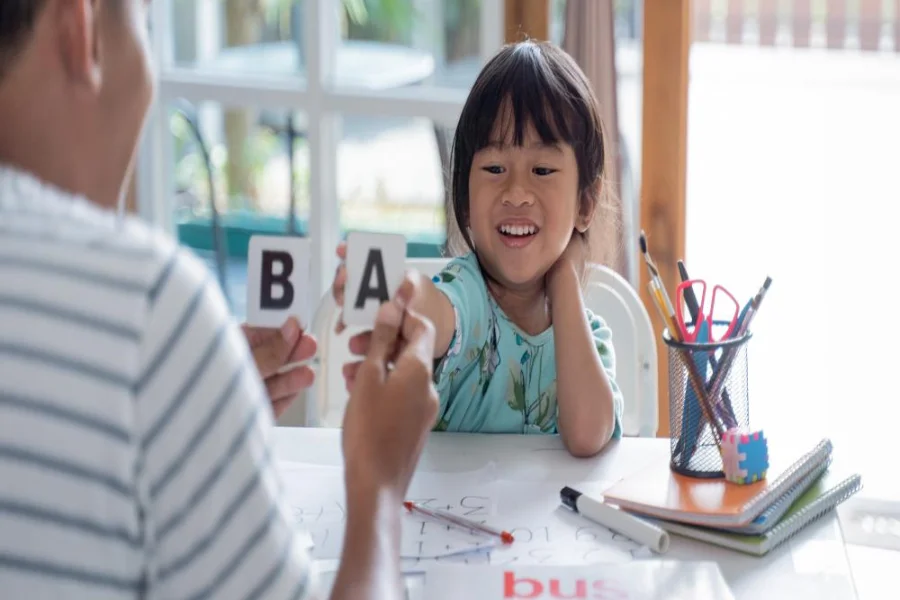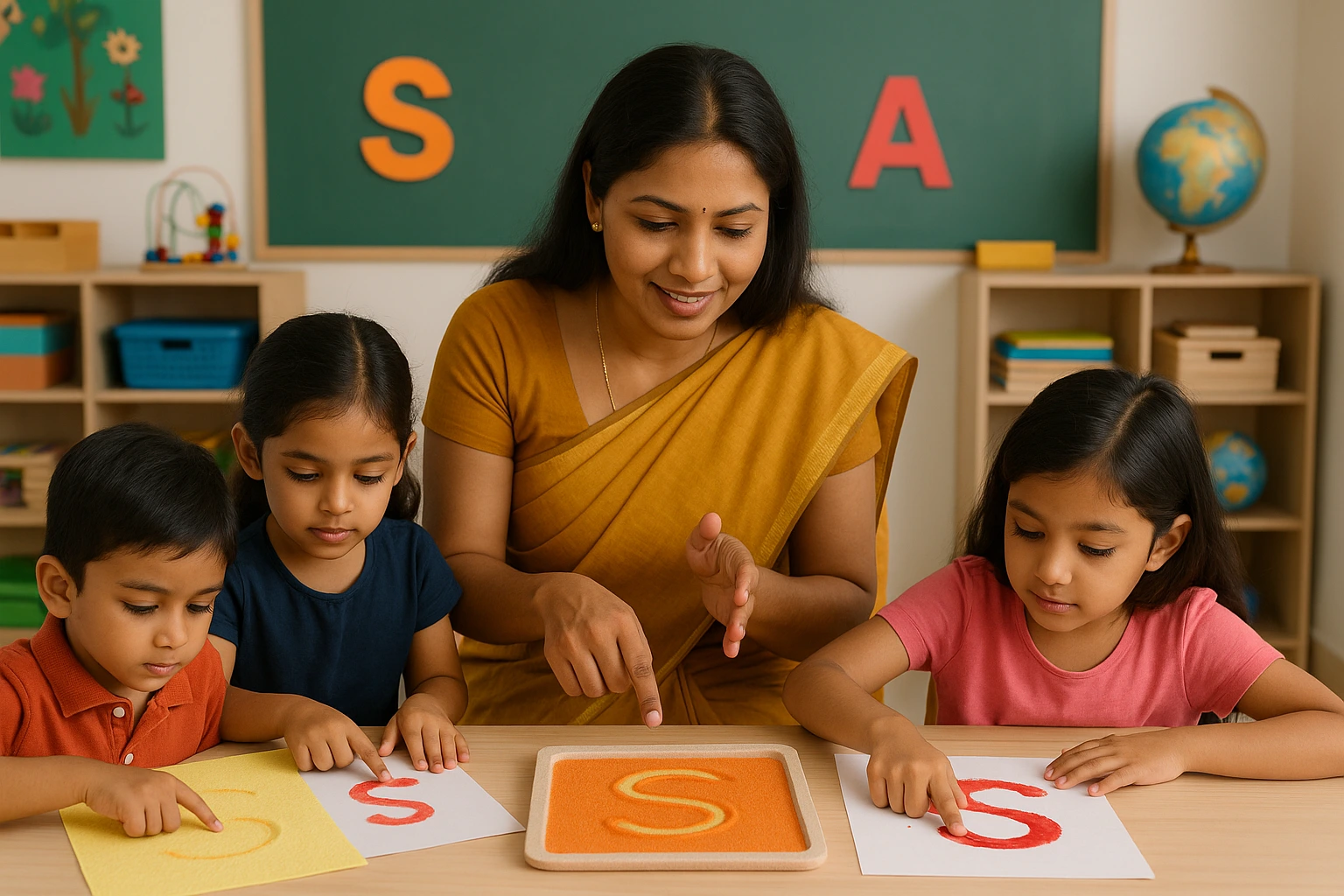What is Multisensory Phonics Teaching?
What is Multisensory Phonics Teaching?
Multisensory Phonics Instruction creates good reading and spelling capabilities in kids who remain active and involved during the process. Multisensory Phonics educates kids to acquire knowledge via more than one sense simultaneously; knowledge acquisition is made effective and fun. Kids apply sight, hearing, touch, and motion in combination to learn Letter Sounds and word patterns. This approach accords varied learning styles and enhances memory by linking language to actual experiences.
Table of Content
What is an Example of Multisensory Phonics Teaching?
Multisensory Phonics Teaching can be highly successful when students learn a letter sound with multimodal activities centered on the students employing their senses (sight, sound, touch, movement). Instead of simply hearing their teacher or listening to a book, children will be engaged actively, and they will learn using several senses. For instance, when learning about the letter “S,” teachers can take number of approaches to make the learning stick:
Click Here, to download the brochure of Phonics Teachers Course!
For the details of Phonics Teachers Course, Call or Whatsapp on +918104606573 / +919869546913.
- Visual learning: Display the letter “S” on a flashcard or write it on the board, allowing children to observe its unique shape.
- Auditory practice: Say the sound of the /s/ letter without or before or after a few syllables, and repeat for children to listen and practice the sound as it is supposed to be sounded.
- Tactile experience: Invite children to trace the letter “S” in sand, on textured paper, or with finger paint, and enhance their exploration of the sense of touch.
- Verbal reinforcement: Have children trace the letter “S” in sand, on textural paper, or with finger paint – so they can further explore the sense of touch.
- Kinesthetic action: By sliding across the floor and hissing like a snake, children can imitate this animal for a connection to phonics engaged with body movements.
When kids use multiple senses simultaneously, they are creating stronger connections by forming a link between Letters and Sounds. In turn, it holds attention from an engagement context, attention from a different context like our five senses, and then solidifies the skill from brain to body practice as children apply multiple representations like gesture with their bodies as they learn phonics.
Multi-Sensory approach Activities
The Multi-Sensory Method is all about employing more than one sense simultaneously in order to interactively, enjoyably, and effectively learn. It is particularly helpful in educating young children because it enhances memory as well as accommodates various learning styles. Activities under this method prompt children to see, hear, move, and touch as they learn.
Here are some examples which include:
- Tracing Letters in Sand or Rice: Kids use their fingers to trace letters or numbers in a sand tray, rice tray, or salt tray, so they learn through vision and touch.
- Phonics with Actions: With each sound displayed, which has similar movement, like hopping when saying the /h/ sound or jumping when saying the /j/ sound.
- Storytelling with Props: Children learn more with puppets, toys, and pictures during storytelling, and this can be through visuals, which is easier.
- Music and Rhymes: Kids singing songs and clapping hands to syllables helps learn them about, how words sound or how they’re put together.
- Art Integration: Kids paint and draw things that begin with a certain sound or word, which combines art with learning to read.
- Movement Games: Engaging the body and mind together by doing activities like jumping on letter mats, sorting shapes by colours, or running to objects on cue.
- Sensory Writing: Writing letters with finger paint, clay, or textured boards builds muscle memory along with phonics recall.
Children not only understand concepts through these activities which makes learning active and engaging, but also retain them through meaningful experience.
Click Here, to download the brochure of Phonics Teachers Course!
For the details of Phonics Teachers Course, Call or Whatsapp on +918104606573 / +919869546913.

Source: stock.adobe
Tools used for Multi-Sensory Approach
The multisensory method helps learning through communication with tools that engage more than one sensory path at the same time. Different types of tools support kids, so they remain busy and retain information by encoding it through letters.
These are the list of tools that are commonly used:
- Flashcards: Kids connect visuals with sound with the help of bright colored card with letters, words or pictures.
- Sand Trays or Rice Trays: Letters and shapes are traced in tactile surfaces by children, improving tactile and visual learning.
- Alphabet Mats and Tiles: Big floor mats or tiles of the letters enable children to jump, step, or put the letters together as they learn phonics.
- Magnetic Letters: Kids use moveable letters on boards to build words through interactive practice.
- Phonics Songs and Audio Tools: Kids hear and remember letter sounds and word patterns through recorded sound, music and rhymes.
- Puppets and Story Props: For kids learning makes more fun, when storytelling with props like puppets, toys and picture makes them visualise and boost their learning and imagination skills.
- Clay, Play dough, or Sandpaper Letters: Physical skills improve when kids start tracing shapes and letters with their hands which help to improve their motor skills.
- Interactive Digital Tools: spelling, and reading skills in an interactive way.
- Movement-Based Resources: Games like letter hopscotch, movement cards, or yoga-based phonics activities to share body movement with language learning, which makes phonic more active and attractive.
These multisensory provides different learning experiences and ensuring that each child has the opportunity to grasp concepts effectively.
Click Here, to download the brochure of Phonics Teachers Course!
For the details of Phonics Teachers Course, Call or Whatsapp on +918104606573 / +919869546913.

Best Practices for Implementing Multisensory Phonics
To use Multisensory Phonics, one must plan carefully and regularly engage activities that involves sight, sound, touch, and motion are baseline aspects of multisensory phonics. The aim is to offer interactive, purposeful, and engaging learning experience in regards to phonics for each learner.
The Phonics Teacher Training Course not only offers teaching effectiveness, but also ensure children gain a strong foundation in reading and spelling.
Here are some of the best practices to adopt:
- Integrate Multiple Senses Together: Hands-on exercises for making ideas from magnetic letters, movement, and making phonics sounds.
- Keep Lessons Short and Engaging: The lessons are requirement for visual, auditory, or kinesthetic students, so all children are able to concentrate and work with physical and/or social space.
- Use Repetition with Variety: Communicate the similar words or sounds in a variety of modes like song, games, tracing, or movement activities.
- Encourage Active Participation: Young kids build strong understandings when they use magnetic letters, rehearsal of phonics sounds, or to have movement and learning.
- Differentiate for Learning Styles: Adapting activities for visual, auditory, or kinesthetic learners to allow all kids can benefit with this method.
- Incorporate Real-Life Connections: Using the objects and experience, kids make the sounds of phonics related to real life.
- Provide Consistent Practice: Combine two concepts that help with daily practice, reinforce sound recognition and support long-term retention.
Vidhyanidhi Education Society (Govt. Regd.) offers a Certificate Programme in Phonics Teacher Training Course that equips teachers with both theoretical tools, and strategies to implement multisensory phonics method. Educators aiming to refine these skills can benefit from professional training.
Master phonics skills—enrol in Vidhyanidhi’s Phonics Teachers Course today!
Click Here, to download the brochure of Phonics Teachers Course!
For the details of Phonics Teachers Course, Call or Whatsapp on +918104606573 / +919869546913.
FAQs
What is a Multisensory Activity for Phonemic Awareness?
To build stronger sound –letter connections, tracing letters in sand while saying the sound aloud combines touch, sight, and hearing sense.
What are the Types of Multisensory Learning?
Vidhyanidhi Education Society teaches teachers to use the main types of visual, auditory, kinesthetic, and tactile learning.





